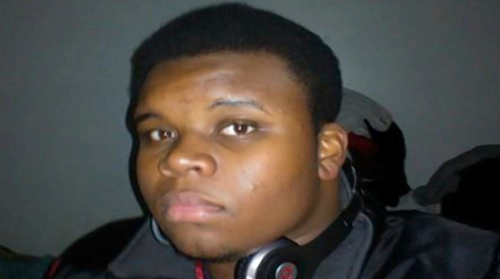By A.C. Thompson
Ed note: A.C. used to work for me at the Bay Guardian, and I thought this piece he wrote might be useful not only for discussions about Michael Brown but about the autopsy of Alex Nieto.
OCTOBER 7, 2014 — In the next few weeks, separate teams of doctors will issue autopsy reports about Michael Brown, the unarmed African American shot to death by a police officer in Ferguson, Missouri. If history is any guide, they will differ, perhaps significantly, on how to interpret the gunshot wounds on his body. Michael Baden, the veteran medical examiner chosen to autopsy the body by Brown’s family, has released the preliminary results of his autopsy and both the St. Louis County Medical Examiner and U.S. Justice Department have announced plans to conduct or commission separate post mortems.
As a journalist, I’ve read roughly 1,000 autopsy reports and spent much of my career reporting on fatal encounters between police officers and civilians. Here’s some of what Baden found and what experts will be looking for as they examine Brown’s corpse:
- Evidence that Brown was fleeing from the officer who shot him, Darren Wilson. Shots to the back are a red flag, indicating the victim may have been running from the officer rather than attacking. The basic law on use of force turns on whether a police officer acted from a “reasonable belief” that he or she was facing a lethal threat. Baden — who was hired by Brown’s family — believes Brown was shot at least six times with all the bullets striking him from the front.
- Signs of a physical altercation. Forensic pathologists study the exterior of the body for bruises, scrapes and lacerations which can be signs that a scuffle preceded the fatal shots. Witnesses have said Brown and Wilson wrestled in the moments before the killing. On Baden’s diagram of Brown’s body, the doctor does not appear to have noted any significant injuries other than the gun shot wounds. Baden did not find gunpowder residue on Brown’s hands, one piece of evidence that would likely be present if the two men were struggling for control of a gun discharged at close range.
- Bullet trajectory. Shots fired at a downward angle may indicate the officer fired while the victim was on his knees or laying on the ground. A person in those positions generally poses less of a physical threat. Baden said a shot to Brown’s head appeared to have come from above; he believes this was the fatal shot.
- Number of shots. Baden voiced concern over the fact that Brown was hit by at least six shots. The doctor, who served earlier in his career as chief medical examiner for New York City and as an expert for the New York State Police, was quoted by the New York Times as saying, “In my capacity as the forensic examiner for the New York State Police, I would say, ‘You’re not supposed to shoot so many times.'” The number of shots may or may not be significant. Training on lethal force varies from department to department. Many forces train officers to continue firing until the suspect has been completely subdued. Some experts say that incidents in which a civilian has been hit with a single shot are more suspicious than those with multiple shots: The lone bullet could have been fired accidentally or in a moment of rage.
- Gunshot residue. The presence of gunshot residue (GSR) on the skin or clothes of the victim may mean that the person was shot at very close range. Baden found no GSR on Brown’s body, but said he did not scrutinize his clothing. Additionally, bullets fired from a few inches away leave distinct wound patterns on the flesh. Baden’s report suggests the shots were fired from further away.
- The presence of alcohol or drugs. Baden has not reviewed the toxicology tests, but results of those tests should be available soon (though it could take the authorities months to release them). Forensic pathologists typically fill vials with bodily fluids — urine, blood, or vitreous humor, the fluid within the eyeballs — and send them off to outside laboratories to be screened for alcohol, prescription drugs, and street drugs. If drugs or alcohol are discovered Brown’s system, that information might provide some additional context to the fatal events.
In some police-civilian clashes, the evidence discovered during an autopsy turns out to be crucial. In the case of Michael Brown, it’s not clear how useful this trio of autopsies will be. As the nation tries to understand what happened on August 9, the autopsy results may well not prove conclusive on the key questions.
A.C. Thompson covers criminal justice issues for ProPublica




